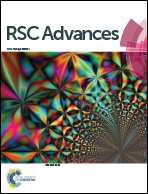Tuning the electronic properties of bondings in monolayer MoS2 through (Au, O) co-doping
Abstract
Improving the electronic properties of Au–S bonding is the key to tuning the carrier transport of monolayer MoS2-based nanodevices. Herein, we systematically investigate the electronic properties for Au-doped, O-doped, and (Au, O) co-doped monolayer MoS2 to analysis the electronic properties of Au–S bondings using first-principles density functional calculations. Three gap states induced by Au–S bondings are observed at the band gap in Au-doped and (Au, O) co-doped monolayer MoS2, which are n-type semiconductors. Moreover, the n-type barriers between the Fermi level of Au-doped and (Au, O) co-doped systems and the CBM of un-doped monolayer MoS2 are 0.84 and 0.65 eV, respectively. In addition, low electron density and electron density difference are observed for Au–S bondings in Au-doped monolayer MoS2, suggesting weak covalent Au–S bondings with high resistance; this explains the observed low carrier mobility of monolayer MoS2 devices with an Au electrode. Upon introducing elemental O into Au-doped monolayer MoS2, electron density and electron density difference of Au–S bondings in (Au, O) co-doped monolayer MoS2 are increased to 0.58 and 0.15 eV Å−3, respectively, showing that the covalent Au–S bondings are strengthened, and their resistance and electron injection efficiency are further improved by the elemental O dopant. Our findings may provide an effective way to improve the electronic properties of Au–S bondings in monolayer MoS2-based nanodevices with an Au electrode.


 Please wait while we load your content...
Please wait while we load your content...